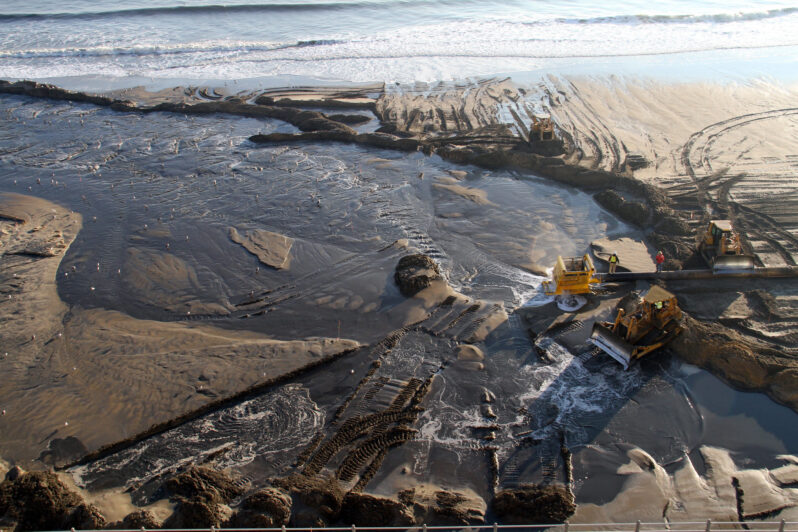Beach Nourishment: A Critical Look – Gary Griggs | Journal of Coastal Research

More than $15 billion, mostly federal dollars, have been spent moving sand to the shoreline for both recreational and shoreline protection benefits. Still, whether in New Jersey, New York, North Carolina, Florida, or California, the life span of the sand added artificially to these beaches in many cases has been relatively short and in some instances has been less than a year…
Washed Away – AARP

As more older Americans move to the coasts, rising seas are wiping out their homes — and retirement dreams…
Dredging, beach replenishment continues in Monmouth County – PBS

Tens of millions of dollars pour into the state each year to fund beach replenishment efforts ..
“…we are doing it with the intent of preserving the economic usefulness of oceanfront properties that are being threatened by erosion and shoreline migration, sea-level rise and storm waves and so forth…That methodology (used by the U.S. Army Corps of Engineers) is flawed because it uses property value to determine the benefits of nourishment and our belief is that our property values aren’t the correct way to assess the utilization or return on public funds. A better way of doing that is looking at what are the public benefits.”
– Andy Coburn, Associate Director for the Study of Developed Shorelines | Western Carolina State University
